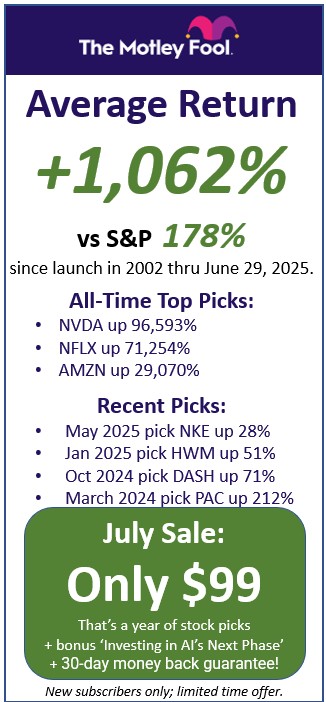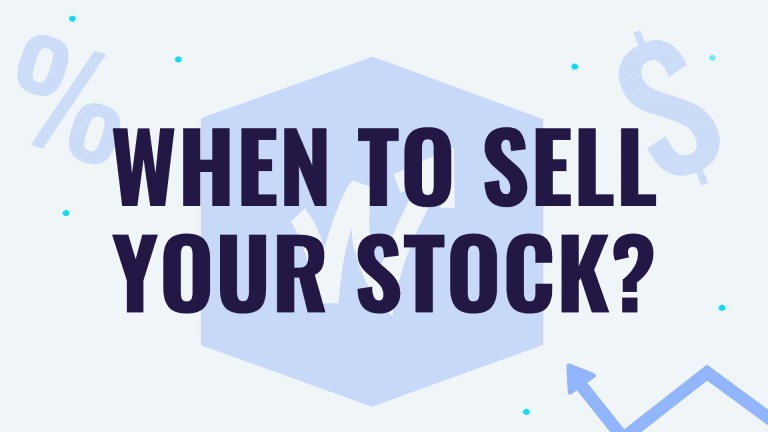When to Sell Your Stocks
Any investor who’s been in the game for awhile has been in situations where they’ve owned a stock that’s either gone up or down and been completely unsure about whether to take their profits, cut their losses, or sit tight and hope for a price increase.
This uncertainty can lead to irrational investing decisions, which can in turn lead to big losses. It is imperative for every investor to have the necessary tools to know when to sell a stock they’re holding, as well as the methods they can use to sell. Today we’re going to be talking about when to sell stocks that you currently hold. By the end of this article, you’ll be able to ask yourself some important questions about why you have the stocks you have and whether or not it’s a good idea to keep holding them.
But hold on! If you haven’t bought any stocks yet, you can’t sell them (well, in most cases). So check out this guide if you want more tips on how to buy stocks.
Let’s start by talking about stop-losses.
A stop-loss order is basically a safety net that can guarantee you won’t lose more than a certain amount of money when holding a stock. You set your stop loss at a certain price below the current stock price, and if the price hits that number, your brokerage will automatically sell the stock for you.
This method can be used both for preventing big losses and locking in profits. For example, if you’ve just bought a stock for $100 and you don’t want to lose more than 5% of your investment, you might set a stop loss order at $95. That way, if the stock price does drop to $95, it will automatically sell and you won’t have to lose any more money.
Similarly, if you’ve already made some gains from holding a stock and you’re comfortable with your profits but want to see if you can squeeze a little more out of it, you can set your stop loss just slightly below the current stock price so that you can gain the potential for much more profit without sacrificing too much of the gains you’ve already earned.
Next, we’ll get into something called a limit sell order.
Limit sells work in a similar way as stop losses, except they’re a bit more ambitious, which also means higher risk.
While a stop loss is an instruction to sell when a stock drops to a certain price, a limit sell is a tool used to automatically sell when the stock rises to a certain price. Since you’re specifying the minimum price you’re willing to sell for above the current price, you could end up in a very unfortunate situation if the stock price starts dropping instead of rising. Limit sells guarantee that you will lock in your extra gains ONLY IF the price rises enough to trigger the limit.
For example, let’s say Sally has one share of ABC Corp. worth $50. Sally is confident that the stock price is going to rise to $60 in the next few days, but she’ll be at work and won’t have time to log into her brokerage. So she sets a limit sell order at $60; that is, if the price of ABC Corp. rises to $60, her brokerage will automatically sell her share for her and she will pocket the profit. But what happens if the stock price only rises to $59, and then drops all the way down to $25 while Sally is at work?
Unfortunately, Sally would end the day down $25 instead of making a profit. This is one of the dangers of taking on investments without an exit plan- you can lose a lot more money than you would have thought if you aren’t careful. But then again, investing itself is full of calculated risks, right? At the end of the day, it’s important to do your own research and take calculated risks based on that research as well as your risk tolerance.
The crucial decision of when to sell a stock can be boiled down to one of the most important rules of investing: Don’t let your emotions take over.
In order to be a successful investor, you have to have a set strategy and stick by it even when your emotions are telling you to buy or sell at a certain time. This rule is very important for both traders and investors, because at the end of the day we all have emotions and it’s so easy for us to let them take over and make us act irrationally.
For example, let’s say you bought a stock for $100. After thinking about your investing goals and considering your personal risk tolerance, you decide that your best strategy is to sell the stock if it hits $110, earning you a 10% profit.
You also decide that you don’t want to lose more than 5% of your investment, so you promise yourself that you’ll sell if the stock price drops to $95. Now, the stock gains 12% in a single day, which surpassed your goal of 10% and even earned you an extra $2. But you’re so happy with the stock’s performance that you decide to abandon your strategy since you think the price will only keep rising.
The next day, the stock goes all the way back down to $100, completely wiping out the gains you would’ve had if you had sold according to your strategy. The next day, the price drops all the way down to $90, this time surpassing your lower limit and putting you down 10%, doubling the losses you were originally willing to take. But now your emotions have completely taken over; you were so close to gaining 12% on your investment that you feel like you just can’t settle for such a big loss.
So you hold on even longer. The stock continues to fall until you just can’t stomach it anymore, so you sell at $80 for a 20% loss. You went from surpassing your profit target to quadrupling your maximum loss allowance.
Conclusion
Even if you haven’t been in this situation before, or if you feel like you’re not the kind of person to let your emotions take over, I guarantee that we will all be faced with situations like this in our investing journeys.
This is why it’s so important to set rules for yourself and stick to them, using tools like stop-losses and limit sells to help take your emotions out of the equation. Can you get lucky and make a good profit even when you abandon your rules? Sure. But long-term, the best investors are ones who do their research, constantly reevaluate their positions, and stick to their strategies without letting their emotions get in the way.
Warren Buffet put it best when he said “if you cannot control your emotions, you cannot control your money”.
So what are the best rules to follow as far as when to sell a stock? There are three main scenarios where selling a stock is a good idea: one, you made a strategic or analytical error investing in the stock in the first place. Two, the price of the stock has risen dramatically. And three, the stock has reached an unsustainable price and you know that it won’t stay that way.
All of these decision-making factors require constant research and questioning. Why was it a bad idea for me to invest in this stock? Was there a change in the fundamentals? Did I miss something important in my research? How big of a price increase is considered dramatic? What would I consider an unsustainable price for this company? All of these factors are important to consider when making buy and sell decisions.
So, now that we’re more familiar with the reasons why someone might want to sell a stock, as well as what methods can be used to execute the sale, it’s time for you to put these ideas into practice! Take some time to evaluate your portfolio and ask yourself why you’re currently in the positions that you’re in. Is it time to make some changes? If so, remember how you can use the tools listed above to help you strike the right balance between potential profit and risk.
FIRST STEPS TO FINANCIAL SUCCESS:
At WallStreetSurvivor, we love with the stock market and we are obsessed with finding the best deals to help us all make more money. Here is our list of the BEST STOCK SERVICES to help you get start investing correctly:
1 - Get Up To $1,000 in FREE Stock with Robinhood! The fastest growing brokerage, Robinhood, just hit 10,000,000 accounts. Why? Because they DON'T charge commission AND they are giving away up to $1,000 in free stock when you open an account. CLICK HERE to learn more about Robinhood.
2 - Not Sure What Stocks to Buy? Get the BEST Stocks Picks! We subscribe to dozens of stock newsletters, and there is one that has outperformed all the rest for the last 5 years. This one service has an amazing average return of 74.63% on ALL of their stock picks the last 3 years. Their recent winners have been stocks like Shopify (SHOP) up 866%, Match Group (MTCH) up 549%, Paycom (PAYC) up 235%, and many others that have doubled in the last 3 years.
CLICK the image below go see their latest offer...

3 - Don't Pay Commission! Open a Real Brokerage Account and Trade Commission-Free. Here's the GREAT NEWS--the brokerage industry is very competitive right now and some brokers are offering FREE COMMISSIONS and other incentives to acquire new accounts. CLICK HERE to get commission-free trades. Or CLICK HERE to get a review of the Best Online Stock Brokers.
4 - Get the Best Stock Picking Newsletter of 2020 We subscribe to dozens of stock newsletters. Some of these newsletters are longer term investing, some are short term, and some are penny stocks. Find the best newsletter for your interests. So which stock newsletters are the best? Visit our review of the best stock newsletters.
5 - Is the Motley Fool a Good Source of Stock Picks? The Motley Fool is probably the best know stock newsletter service. Is it worth it? Read our full Motley Fool Review
